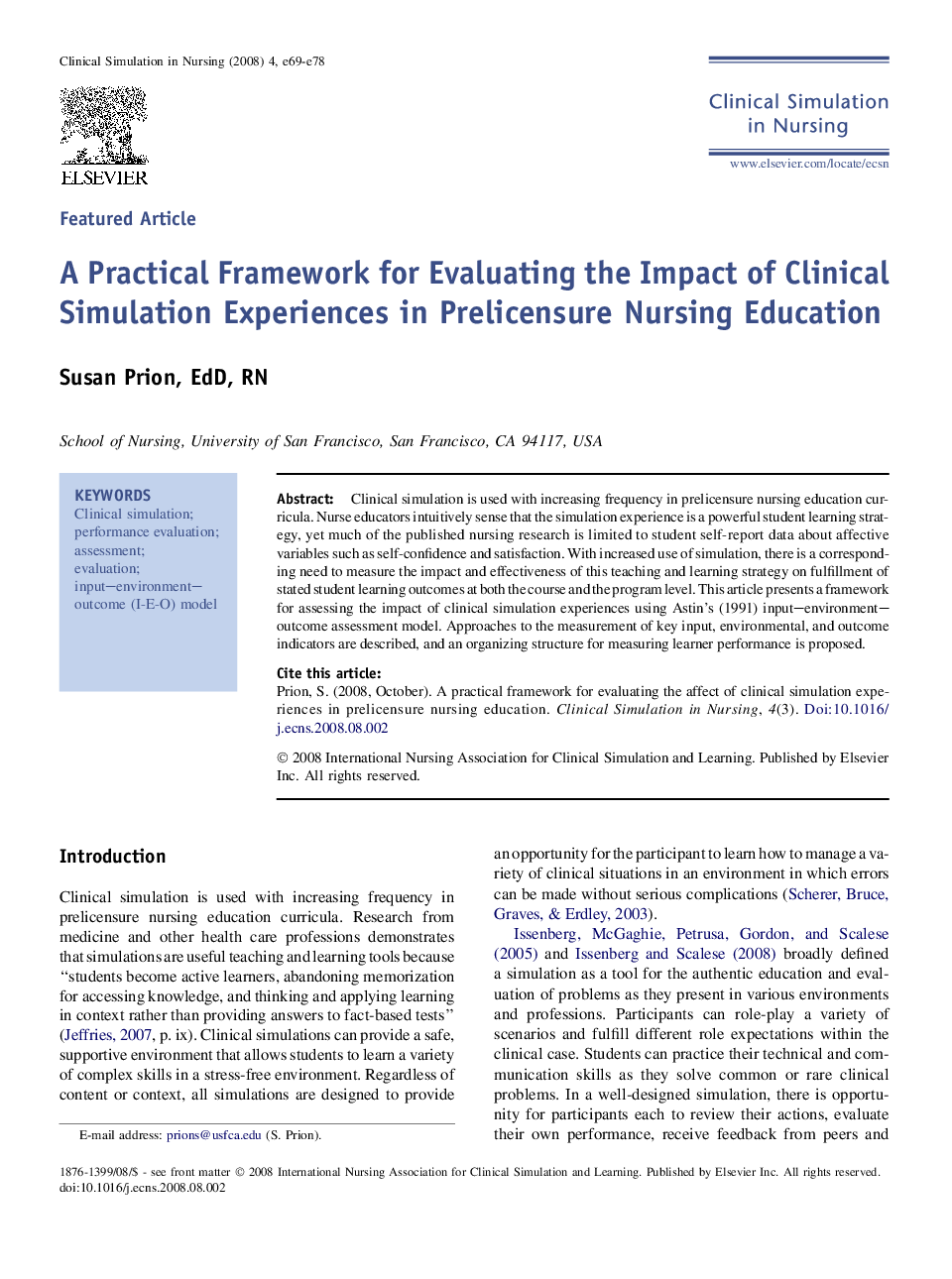| Article ID | Journal | Published Year | Pages | File Type |
|---|---|---|---|---|
| 2647275 | Clinical Simulation in Nursing | 2008 | 10 Pages |
Clinical simulation is used with increasing frequency in prelicensure nursing education curricula. Nurse educators intuitively sense that the simulation experience is a powerful student learning strategy, yet much of the published nursing research is limited to student self-report data about affective variables such as self-confidence and satisfaction. With increased use of simulation, there is a corresponding need to measure the impact and effectiveness of this teaching and learning strategy on fulfillment of stated student learning outcomes at both the course and the program level. This article presents a framework for assessing the impact of clinical simulation experiences using Astin's (1991) input–environment–outcome assessment model. Approaches to the measurement of key input, environmental, and outcome indicators are described, and an organizing structure for measuring learner performance is proposed.
